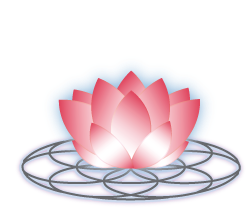Summary:
Low-Level Laser Therapy, also known as Photobiomodulation (PBM), is being explored as a potential treatment for female infertility. It helps fertility by improving blood circulation, to benefit the ovaries and the uterus, and improve endometrial thickness and oxidative stress. PBM also improves the energy integrity of the cells and provides more ATP (cellular energy) for the act of implantation. In the studies, PBM was seen to increase pregnancy and live births in 30-60% of the participants, who were all considered to be infertile and had attempted various Assisted Reproductive Technology (ART).
———————————————————————————————————
The journey to parenthood can be filled with hope, anticipation, and sometimes, unexpected challenges. For many facing infertility, especially unexplained or age-related issues, the search for effective treatments goes beyond the conventional paths. Enter Low-Level Laser Therapy (LLLT), also known as Photobiomodulation (PBM), a therapy now being explored as a promising adjuvant in the fertility world. But how does it work, and is it truly helping women achieve their dream of a healthy pregnancy? Let's dive into what the latest research is uncovering.
Photobiomodulation is a non-invasive way to help treat a variety of different concerns. It is able to do this by supporting the mitochondria to create more ATP (energy of the cell), increasing blood flow, allowing for a thicker and healthier endometrium, and decreasing inflammation in the area being treated. This means that it can help with fertility in men and women. There have been a number of studies showing improvement in egg quality, as well as sperm quality and motility (how well they move, eg. in a straight line, circles, or not moving at all).
Endometrium:
For an embryo to implant successfully, the uterine lining - or endometrium - needs to be just right. In one study using PBM, found that it could enhance the thickness of the endometrium. The authors of this study suggest that PBM might even help extend the critical “Window of Implantation.” Giving the embryo a little bit more time to implant into the endometrium.
Blood flow:
Blood transports nutrients, oxygen, and beneficial signaling molecules throughout the body. It also helps to eliminate waste and brings that waste to our liver and kidneys to dispose of. PBM has been shown to have a significant positive effect on both local and systemic blood flow. Improved blood supply to the ovaries and uterus is vital for conception and supporting a healthy pregnancy.
Energizing cells:
The act of implantation is a very energy-intensive process, needing a lot of ATP. Age and other factors can impair mitochondrial function, affecting egg quality and energy production. PBM enhances mitochondrial activity, increasing ATP production and decreasing oxidative stress. This post in cellular energy is seen as foundational for reproductive health and early developmental stages, like blastocyst differentiation. Clinical protocols involving PBM often include treatment times around Assisted Reproductive Technology (ART) procedures, such as having treatments before embryo transfer.
Safety and Effectiveness:
The studies highlight positive results with PBM. One study of infertile women who had failed previous ART attempts reported successful pregnancy rates of over 22% when PBM, paired with the proximal priority technique, was applied. Another case series noted that all three cases of unexplained age-related infertility improved and all resulted in healthy live births following PBM treatments. Yet another study combining ART and PBM suggested a better pregnancy rate than ART alone in women under 45 years old.
Importantly, the 2024 case series reported no adverse effects from the PBM protocols used. The in vitro study even found that PBM had a protective effect on endometrial cells by upregulating a tumor suppressor gene (PTEN), suggesting safety at the cellular level. According to the studies, this innovative therapy supports implantation! It's being investigated and applied as a way to actively create conditions favorable for implantation.
Treatments:
Treatments can be PBM only or combined with acupuncture. PBM treatments can range from 30-45 minutes on their own, or 60-75 minutes when combined with acupuncture. For PBM, the light panels are placed on the lower back, followed by the lower abdomen. These panels are placed in one area and go through their cycle of red LED light, followed by infrared light, before being moved to the next area. After these panels are done, a laser probe is used to treat deeper and specific areas.
If there are immune or circulatory issues involved, the treatments may be longer, and can involve a technique called The Paroximal Priority Technique, where the laser probe is placed against the carotid artery at the neck (one at a time), to improve systemic circulation. The improvement in circulation can be quite pronounced, which will help with the development of the endometrium, and transportation of nutrients, and the elimination of waste.
If this is something that interests you, book in with Dr. Charmange at Vive Health.
~Dr. Charmagne
References:
Phypers R, Berisha-Muharremi V, Hanna R. The Efficacy of Multiwavelength Red and Near-Infrared Transdermal Photobiomodulation Light Therapy in Enhancing Female Fertility Outcomes and Improving Reproductive Health: A Prospective Case Series with 9-Month Follow-Up. J Clin Med. 2024 Nov 24;13(23):7101. doi: 10.3390/jcm13237101. PMID: 39685560; PMCID: PMC11642705.
Taniguchi Y, Ohshiro T, Ohshiro T, Sasaki K. ANALYSIS OF THE CURATIVE EFFECT OF GaAlAs DIODE LASER THERAPY IN FEMALE INFERTILITY. Laser Ther. 2010;19(4):257-261. Available from: www.jstage.jst.go.jp/browse/islsm1....
Ohshiro T. Personal overview of the application of lllt in severely infertile japanese females. Laser Ther. 2012;21(2):97-103. Available from: www.jstage.jst.go.jp/browse/islsm7....
El Faham D, Elnoury MA, Morsy MI, El Shaer MA, Nour Eldin GM, Azmy OM. Has the Time Come to Include Low-Level Laser Photobiomodulation as an Adjuvant Therapy in the Treatment of Impaired Endometrial Receptivity? Lasers Med Sci. 2018;33:1105–1114. doi:10.1007/s10103-018-2475-y.30.
Phypers R, Berisha-Muharremi V, Hanna R. The Efficacy of Multiwavelength Red and Near-Infrared Transdermal Photobiomodulation Light Therapy in Enhancing Female Fertility Outcomes and Improving Reproductive Health: A Prospective Case Series with 9-Month Follow-Up. J Clin Med. 2024;13(23):7101. doi:10.3390/jcm13237101.31....


